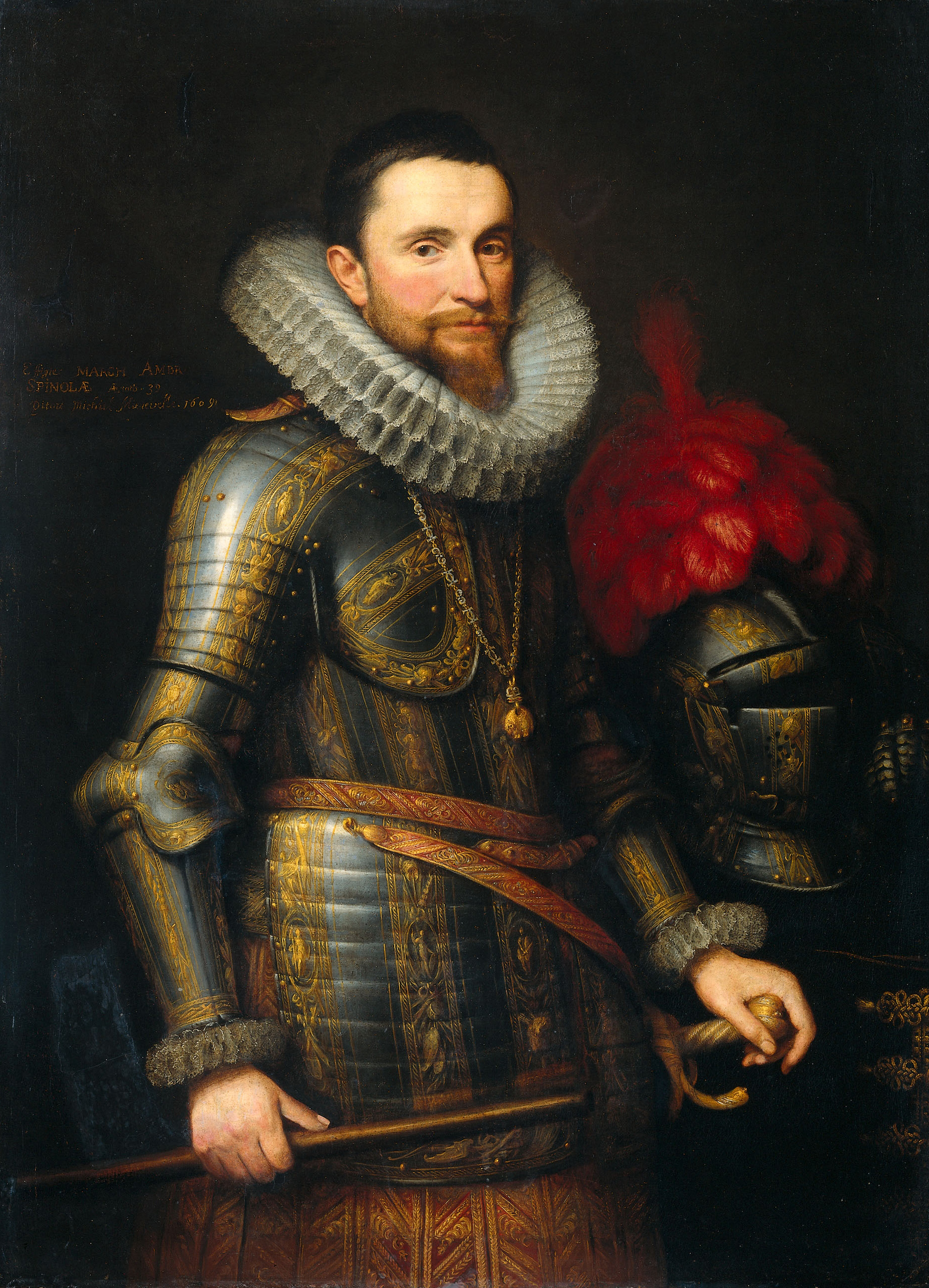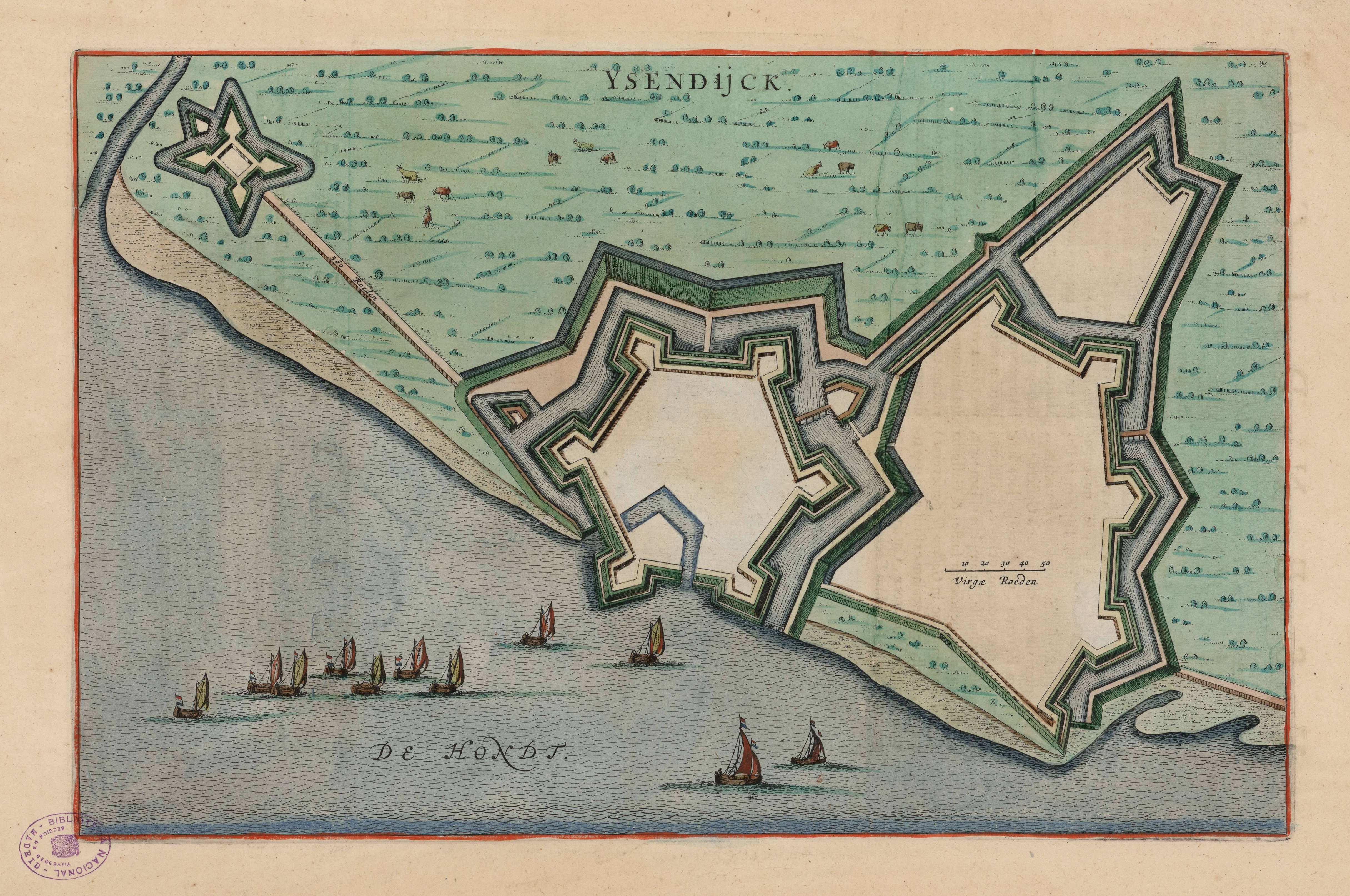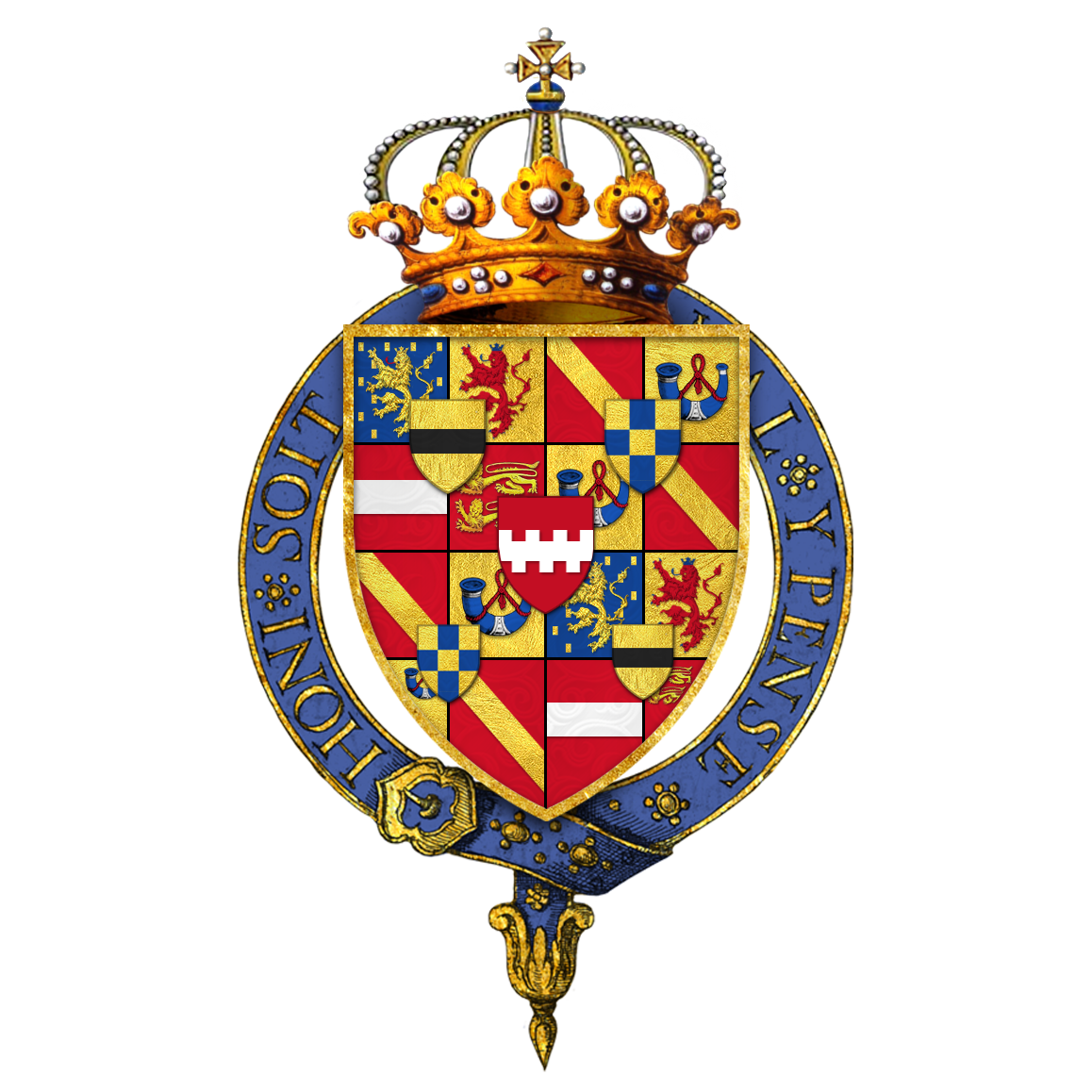|
Siege Of Lingen (1605)
The siege of Lingen of 1605 took place between 10 August and 19 August 1605, at Lingen, District of Emsland, Lower Saxony, between Spain and the United Provinces, during the Eighty Years' War. Prince Maurice of Nassau tried to preserve Lingen at all costs.''Narración de los sucesos principales de la historia de España'' p.14 The Dutch garrison led by Captain Maerten Cobben, expecting to be aided by Maurice's army, held out for nine days, but were finally forced to surrender. The siege was part of Spinola's successful campaign of 1605–1606.Van Nimwegen p.189–190 Background After the devastating siege of Ostend, on 2 July 1605, the Dutch headquarters received reports that Don Ambrosio Spinola with Spain's main army of Flanders was headed towards the strongholds of the Rhine, in Cologne.Van Nimwegen p.190 Maurice and his commanders, who had been secretly planning to lay siege to Antwerp, had to abandon all hope. The movements of Ambrosio Spinola not only prevented the Dutc ... [...More Info...] [...Related Items...] OR: [Wikipedia] [Google] [Baidu] |
Lingen
Lingen (), officially Lingen (Ems), is a town in Lower Saxony, Germany. In 2008, its population was 52,353, and in addition there were about 5,000 people who registered the city as their secondary residence. Lingen, specifically "Lingen (Ems)" is located on the river Ems in the southern part of the Emsland District, which borders North Rhine-Westphalia in the south and the Netherlands in the west. History Lingen was first mentioned in the Middle Ages (975 AD). Economy and education Lingen is known for its offshore- and nuclear industry (Emsland Nuclear Power Plant). The University of Applied Sciences Osnabrueck has set up a branch campus, located in the centre of Lingen, with the three Institutes for Management and Engineering, Communications Management and Teaching of Theatre. In 2000 the institutes in Lingen merged into the Faculty of Society and Technology. In 2010 there are expected to be about 2,000 students attending. Climate On 25 July 2019, Lingen set the record for th ... [...More Info...] [...Related Items...] OR: [Wikipedia] [Google] [Baidu] |
Ijzendijke
IJzendijke is a city in the municipality of Sluis, about 10 km east of Oostburg, in the Dutch province of Zeeland. The town received city rights in 1303. History The town was first mentioned in 1127 as Isendica, and means "dike of Iso (person)". IJzendijke used to be a possession of the Saint Peter's Abbey in Ghent. In 1127, it joined the Flemish Hanseatic League. In 1303, it received city rights. It was flooded in 1374, and lost completely in the St. Elizabeth's flood of 1404. In 1587, a sconce was constructed by the Spanish troops, and conquered by Maurice, Prince of Orange in 1604. Two ''polder''s were constructed, and after 1618, an octagon fortress was built with a central market square. In 1648, IJzendijke became a garrison city. The Dutch Reformed church is an aisleless church built between 1612 and 1614. Between 1656 and 1659, it was enlarged to a stretched octagon. The war damage was repaired in 1949. Even though the fortress was deemed unconquerable, Napoleo ... [...More Info...] [...Related Items...] OR: [Wikipedia] [Google] [Baidu] |
Frederick Henry, Prince Of Orange
Frederick Henry ( nl, Frederik Hendrik; 29 January 1584 – 14 March 1647) was the sovereign prince of Orange and stadtholder of Holland, Zeeland, Utrecht, Guelders, Overijssel in the Dutch Republic from 1625 until his death in 1647. In the last seven years of his life, he was also the stadtholder of Groningen (1640-1647). As the leading soldier in the Dutch wars against Spain, his main achievement was the successful Siege of 's-Hertogenbosch in 1629. It was the main Spanish base and a well-fortified city protected by an experienced Spanish garrison and by formidable water defenses. His strategy was the successful neutralization of the threat of inundation of the area around 's-Hertogenbosch' and his capture of the Spanish storehouse at Wesel. Biography Early life Frederick Henry was born on 29 January 1584 in Delft, Holland, Dutch Republic. He was the youngest child of William the Silent and Louise de Coligny. His father William was stadtholder of Holland, Zeeland, Utrecht, a ... [...More Info...] [...Related Items...] OR: [Wikipedia] [Google] [Baidu] |
Wachtendonk
Wachtendonk at the confluence of Niers River and Nette River is a municipality in the district of Kleve in North Rhine-Westphalia, Germany. It is located west of the Rhine half way between Duisburg and Venlo at the Dutch Dutch commonly refers to: * Something of, from, or related to the Netherlands * Dutch people () * Dutch language () Dutch may also refer to: Places * Dutch, West Virginia, a community in the United States * Pennsylvania Dutch Country People E ... border. Its name means 'bailiff's Donk'. Gallery File:Wachtendonk.JPG, Feldstrasse File:Wachtendonk-Thal Joaphat.JPG, Old Monastery 'Thal Josaphat' File:Wankum, Sankt Martin Kirche in straatzicht foto1 2012-08-20 17.28.jpg, Wankum, church (Sankt Martin Kirche) in the street References External links * Kleve (district) {{Kleve-geo-stub ... [...More Info...] [...Related Items...] OR: [Wikipedia] [Google] [Baidu] |
Mülheim
Mülheim, officially Mülheim an der Ruhr () and also described as ''"City on the River"'', is a city in North Rhine-Westphalia in Germany. It is located in the Ruhr Area between Duisburg, Essen, Oberhausen and Ratingen. It is home to many companies, especially in the food industry, such as the Aldi Süd Company, the Harke Group and the Tengelmann Group. Mülheim received its town charter in 1808, and 100 years later the population exceeded 100,000, making Mülheim officially a city. At the time of the city's 200th anniversary with approximately 170,000 residents, it was counted among the smaller cities of Germany. Geography Geographical location Mülheim an der Ruhr is located to the southwest of Essen in the Ruhr valley. Geology The northern foothills of the Rhenish Massif are characterised by the distinctive rock formation of the bare mountain slopes through which run coal-bearing layers which formed during the carboniferous period. Here the Ruhr cuts more than 50 meter ... [...More Info...] [...Related Items...] OR: [Wikipedia] [Google] [Baidu] |
Groenlo
Groenlo () is a city in the municipality of Oost Gelre, situated in the eastern part of the Netherlands, on the German border, within a region in the province of Gelderland called the Achterhoek (literally: "back corner"). Groenlo was a municipality until 1 January 2005, when it merged with Lichtenvoorde. Until 19 May 2006 Groenlo was the official name of Oost Gelre. As of 1 January 2006 Groenlo, including its hamlet Zwolle, counted a population of 10,067. Groenlo is known locally and historically as Grolle, Groll or Grol. Today, Groenlo is known primarily for its beer brewery Grolsch (literal meaning: "from Grol"), which was in business since 1615, but has been closed in 2004 when it moved to Boekelo. Grolsch produces many specialty beers (including beers for each season) and its beer is exported all over the world. Groenlo's military history is less well known today. History Groenlo originates from the beginning of the 7th century. The name Groenlo refers to a green wood that l ... [...More Info...] [...Related Items...] OR: [Wikipedia] [Google] [Baidu] |
Bredevoort
Bredevoort (Low Saxon: ) is a small city with city privileges of about 1600 inhabitants in the municipality of Aalten, Netherlands. It is between the towns of Aalten and Winterswijk. Bredevoort has presented itself as ''Bredevoort boekenstad'' (''Bredevoort book town''), after the examples of Hay-on-Wye in Wales and Redu in Belgium. There are now more than 20 second-hand book shops in the town. Bredevoort was a ''Heerlijkheid'' and a separate municipality until 1818. The villages Aalten, Dinxperlo and Winterswijk included the fiefdom of Bredevoort when it became a part of Aalten in 1818. History The name Bredevoort appears for the first time on a list of properties belonging to the archbishop of Cologne in 1188, who owned shares of the castle Bredevoort. When the count of Steinfurt tried to sell his share of the castle to the bishop of Munster and the count of Loon tried to sell his share to the count of Gelderland, a conflict broke out between the bishop and the count of Gelderl ... [...More Info...] [...Related Items...] OR: [Wikipedia] [Google] [Baidu] |
Rheinberg
Rheinberg () is a town in the Wesel (district), district of Wesel, in North Rhine-Westphalia, Germany. It is situated on the left bank of the Rhine, approx. north of Moers and south of Wesel. It comprises the municipal districts of Rheinberg, Borth, Budberg, and Orsoy, Germany, Orsoy. History Rheinberg, is first documented in 1003, came into the possession of the archbishops of Colognein the 11th century. After the town rights of Rheinberg had been granted to Archbishop Heinrich von Molenark in 1233, the construction of a city fortification began. This was initially only made of wood, but was replaced at the end of the 13th century by basalt, among other things. Almost at the same time, around 1293, the construction of the electoral palace and the customs tower called the ''Powder Tower,'' northeast of the city center, began. Explosion of the Powder Tower in 1598, in which large parts of Rheinberg, the castle and the associated Old Waiter's Shop were destroyed The castle wa ... [...More Info...] [...Related Items...] OR: [Wikipedia] [Google] [Baidu] |
Zwolle
Zwolle () is a city and municipality in the Northeastern Netherlands. It is the capital of the province of Overijssel and the province's second-largest municipality after Enschede with a population of 130,592 as of 1 December 2021. Zwolle is on the border with Gelderland, which follows the river IJssel, and is located about 50 km north east of Utrecht and 85 km south west of Groningen. The current Mayor of Zwolle is Lorenzo Brands. History Archaeological findings indicate that the area surrounding Zwolle has been inhabited for a long time. A woodhenge that was found in the Zwolle-Zuid suburb in 1993 was dated to the Bronze Age period. During the Roman era, the area was inhabited by Salian Franks. The modern city was founded around 800 CE by Frisian merchants and troops of Charlemagne. Previous spellings of its name include the identically pronounced ''Suolle'', which means "hill" (cf. the English cognate verb "to swell"). This refers to an incline in the landscape betwee ... [...More Info...] [...Related Items...] OR: [Wikipedia] [Google] [Baidu] |
Zutphen
Zutphen () is a city and municipality located in the province of Gelderland, Netherlands. It lies some 30 km northeast of Arnhem, on the eastern bank of the river Ijssel at the point where it is joined by the Berkel. First mentioned in the 11th century, the place-name appears to mean "south fen" ( in modern Dutch). In 2005, the municipality of Zutphen was merged with the municipality of Warnsveld, retaining its name. In , the municipality had a population of . History In about 300 AD, a Germanic settlement was the first permanent town on a complex of the low river dunes. Whereas many such settlements were abandoned in the early Middle Ages, Zutphen, on its strategic confluence of IJssel and Berkel, stayed. After the incorporation of the IJssel lands in Charlemagne's Francia, Zutphen became a local centre of governance under the Count of Zutphen. The Normans raided and ravaged it in 882. Afterwards, a circular fortress was built to protect the budding town against Viking ... [...More Info...] [...Related Items...] OR: [Wikipedia] [Google] [Baidu] |
Fortress
A fortification is a military construction or building designed for the defense of territories in warfare, and is also used to establish rule in a region during peacetime. The term is derived from Latin ''fortis'' ("strong") and ''facere'' ("to make"). From very early history to modern times, defensive walls have often been necessary for cities to survive in an ever-changing world of invasion and conquest. Some settlements in the Indus Valley civilization were the first small cities to be fortified. In ancient Greece, large stone walls had been built in Mycenaean Greece, such as the ancient site of Mycenae (famous for the huge stone blocks of its 'cyclopean' walls). A Greek ''Towns of ancient Greece#Military settlements, phrourion'' was a fortified collection of buildings used as a military garrison, and is the equivalent of the ancient Roman, Roman castellum or English language, English fortress. These constructions mainly served the purpose of a watch tower, to guard certa ... [...More Info...] [...Related Items...] OR: [Wikipedia] [Google] [Baidu] |
Linga Obsessa Et Expugnata - Siege And Capture Of Lingen In 1605 By Spinola
A lingam ( sa, लिङ्ग , lit. "sign, symbol or mark"), sometimes referred to as linga or Shiva linga, is an abstract or aniconic representation of the Hindu god Shiva in Shaivism. It is typically the primary ''murti'' or devotional image in Hindu temples dedicated to Shiva, also found in smaller shrines, or as self-manifested natural objects. It is often represented within a disc-shaped platform, the ''yoni'' – its feminine counterpart, consisting of a flat element, horizontal compared to the vertical lingam, and designed to allow liquid offerings to drain away for collection. Together, they symbolize the merging of microcosmos and macrocosmos, the divine eternal process of creation and regeneration, and the union of the feminine and the masculine that recreates all of existence. The original meaning of ''lingam'' as "sign" is used in Shvetashvatara Upanishad, which says "Shiva, the Supreme Lord, has no liūga", liuga ( sa, लिऊग ) meaning he is transcend ... [...More Info...] [...Related Items...] OR: [Wikipedia] [Google] [Baidu] |









